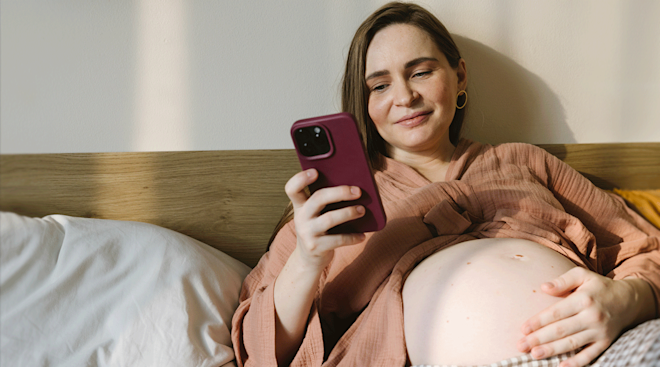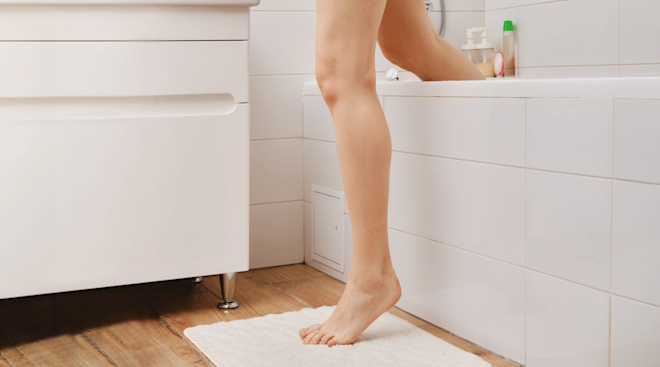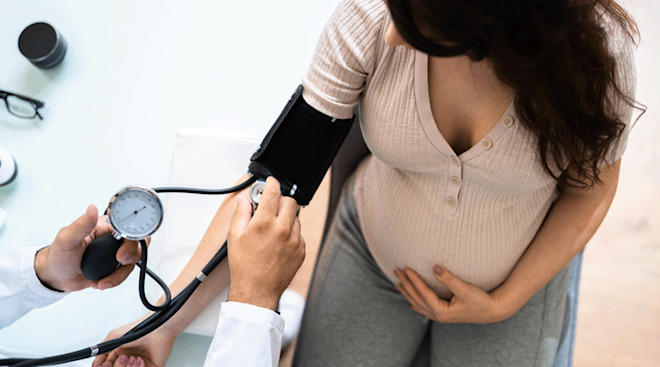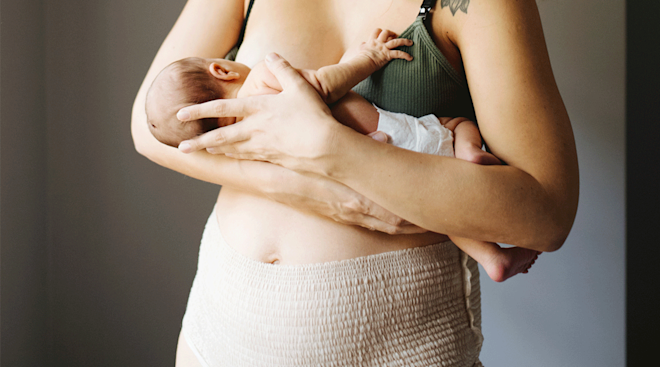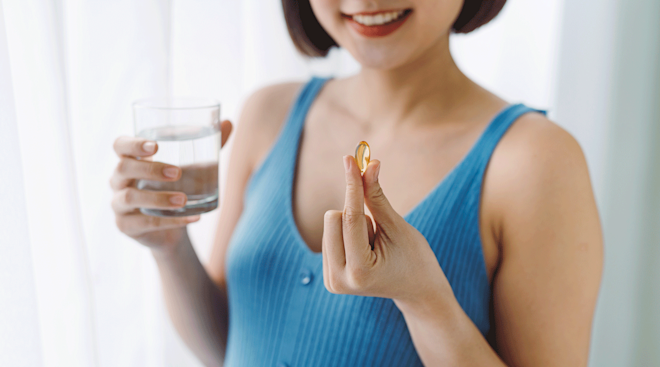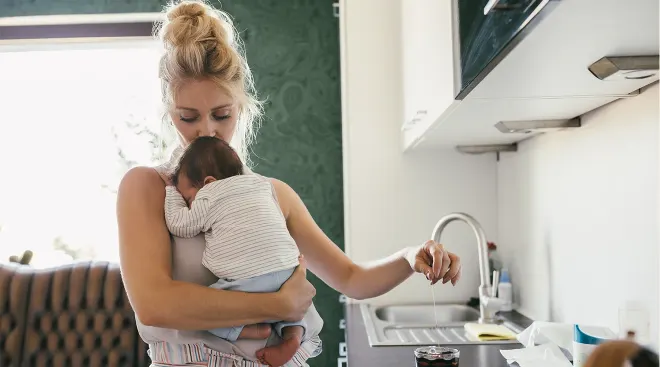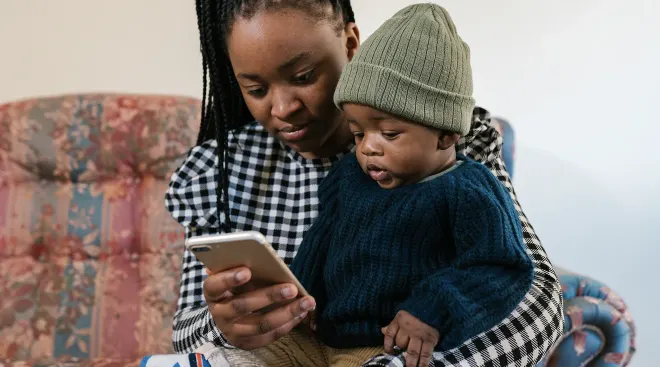FDA Greenlights First At-Home Cervical Cancer Screening Device
Between work, errands, extracurricular drop-offs and trying to maintain a social life, carving out three hours for a doctor’s appointment—let alone finding time to schedule one—can feel nearly impossible for moms juggling nonstop responsibilities. And for those who’ve found Pap smears physically uncomfortable or emotionally distressing, it’s no surprise that routine screenings often get delayed or skipped altogether.
As a result, 1 in 4 women are behind on their yearly cervical cancer screening. But cervical cancer doesn’t wait (a recent study shows cases are on the rise) and skipping screenings can mean missing early signs when the disease is most treatable.
Enter, new tech that’s changing the game and bringing cervical cancer screenings into the comfort of your home, on your schedule. The U.S. Food and Drug Administration (FDA) recently approved the first at-home self-collection device for cervical cancer screening in the U.S., called the Teal Wand.
Available in June, starting in California and expanding nationwide as soon as possible thereafter, after a short virtual visit with a provider, users can collect a sample at home and mail it to a certified lab to be tested using the same methods as in-office screenings, with the same 96% accuracy.
Ashley Comfort, MD, a ob-gyn and medical director at Oula maternity care in New York City, says the test is a wonderful option for those facing mental, financial or physical barriers to care. “We know that access to Pap smear screening and the discomfort associated with exams—whether physical or emotional— can delay access to care and screenings,” she says. “This is a great option for people who want to do it at home and who don’t have the time or desire to go into the clinic.” Urogynecologist and ob-gyn Jocelyn Fitzgerald, MD, agrees that offering more options is often beneficial.
There are some caveats, though. Both Comfort and Fitzgerald note that at-home screening is best suited for individuals at low risk for cervical cancer and unlikely to have HPV (Human Papillomavirus)—the leading cause of cervical cancer. “Someone who is at high risk for HPV (someone who is unvaccinated) would benefit from closer follow-up,” Fitzgerald says. The Teal Wand also states that those who are pregnant, have a history HIV, DES exposure or immunosuppression may not be good candidates.
“This is not a good option for someone at higher risk of pre-cancer—so anyone with a recent prior abnormal Pap smear or history of needing the cervix treated for pre-cancer,” Comfort explains. “I would caution that anyone with symptoms—meaning pelvic pain, abnormal bleeding, heavier bleeding, discomfort or itching—avoid the at-home screening. All would benefit from a pelvic exam for evaluation and diagnostics, which may include the Pap smear or taking a sample of cells from the cervix.” Both Comfort and Fitzgerald also recommend talking with your doctor about the Gardasil vaccine, which has proven to be a powerful tool in preventing the most dangerous types of HPV linked to cancer progression.
Yearly in-office gynecology visits also provide many other benefits that are worth carving time out for regardless of whether you plan on doing a pap in-office, Comfort adds. “So much more goes on at an annual visit other than just a Pap smear. There is a lot of education that can occur, including family planning, contraception, sexual health and dysfunction,” she says. “If someone would much rather do the HPV testing themselves at home, that may free up more time to discuss other quality-of-life issues, which may be a win-win. However, I don’t think the at-home testing should replace a visit. It just gives the option for less of a requirement for the physical part of the exam.”
For those who find that in-office visits might be a better fit due to their risk or other reasons, but still worry about the discomfort that can come with Pap smear, Comfort says there are options. “There are many ways to make the Pap smear more comfortable, such as inserting the speculum yourself or guided breathing to make it more pleasant,” she says.
Please note: The Bump and the materials and information it contains are not intended to, and do not constitute, medical or other health advice or diagnosis and should not be used as such. You should always consult with a qualified physician or health professional about your specific circumstances.
Ashley Comfort, MD, ob-gyn, is the medical director at Oula materbity care in New York City. A medical education enthusiast, dedicated to delivering high-quality, patient-centered care, her passion lies in improving healthcare quality and efficiency, particularly during the pivotal transitions of pregnancy and childbirth. Prior to joining Oula as Medical Director, Dr. Comfort practiced as an Academic Generalist OBGYN in Boston.
Jocelyn Fitzgerald, MD, ob-gyn, is a urogynecologist with the University of Pittsburgh Physicians, Department of Obstetrics, Gynecology & Reproductive Sciences. She specializes in female pelvic medicine and reconstructive surgery, with a focus on treating pelvic floor disorders, advancing women’s health equity, and improving access to care through clinical innovation and education.
Navigate forward to interact with the calendar and select a date. Press the question mark key to get the keyboard shortcuts for changing dates.


































